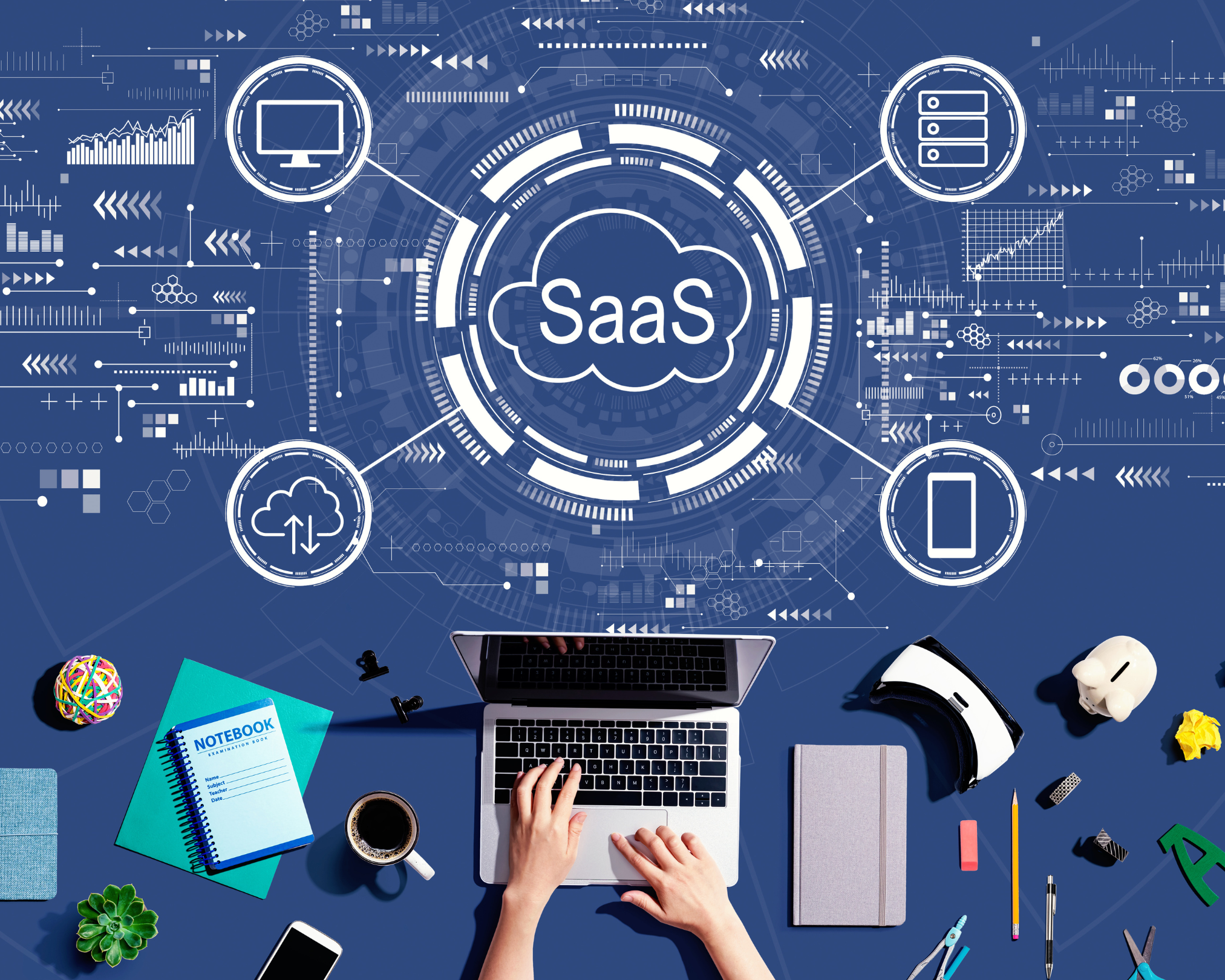1. What is Software-as-a-Service?
Software-as-a-Service, also known as SaaS, is a web-based model that allows internet access to data from any device. The SaaS solution connects users to data stored in the cloud so that you can use it like an on-premises app but running through a web interface or mobile app. SaaS models are usually licenced on a subscription basis you renew monthly or annually.
2. What are the advantages of SaaS over traditional software?
Many customers are curious about the benefits of SaaS compared to outdated traditional software. Here are some of them:
- Accessibility – When all your data is tied to your account and not your individual device, your teams can access the same software systems from multiple devices and locations. So SaaS supports hybrid work models and enables access across different departments, which is essential for smooth business operations today.
- Ease of Use – SaaS tools are designed to be used by consumers with little to no technical knowledge. This means that everyone in the organisation can easily work with SaaS platforms, not just developers or software engineers.
- Security – With SaaS solutions, companies avoid the risk of losing their data because everything is stored in the cloud. Plus, all your data is completely secure because SaaS providers offer you encryption, SSL, and industry-standard security methods to protect your company’s data from unauthorised users.
- Cost – Effectiveness – The price of SaaS depends on the number of users, features, and your business needs. Software as a service is more affordable for companies than buying individual licences for each machine or user.
3. What’s the difference between SaaS and cloud computing?
While cloud computing refers to the provision of various services and resources over the Internet, including data storage, servers, databases, networks, and software, SaaS is a subset of cloud computing. It refers specifically to software applications that are paid for as a service and billed based on usage.
4. What industries are the SaaS model suitable for?
This type of software is the perfect digital solution for a wide range of businesses that offer services and products online. The most common SaaS areas include eCommerce, finance and accounting, healthcare, education, HR/talent management, marketing automation, and customer relationship management (CRM).
5. What are some examples of SaaS?
Many applications that we all use every day for work, pleasure or communication are based on SaaS. Some of the most famous examples are:
- ClickUp and Asana – Project management software solutions,
- Dropbox and Google Drive – Software for sharing large documents and organising digital files,
- Dokteronline – A medical platform,
- HubSpot and Salesforce – CRM software solutions
6. Can I customise my SaaS platform?
Of course, you can! Web-based software can be modified and tailored to your organisation’s needs. For example, companies can customise the user interface, set up their own work style, optimize their personal workspace, or add specific areas, such as data fields, to change the data displayed. SaaS offers different business process features that can also be turned on and off.
7. Is my data secure with SaaS?
Your SaaS provider should implement proper practices and policies in order to ensure the privacy and security of customer data in cloud-based applications and other information assets. That includes important certifications such as the GDPR, ISO 27001, SOC 1 & SOC 2 and other important regulations for your industry.
8. Who owns my SaaS data?
Who owns your data depends on the agreement you sign with your service provider. Your contract should confirm that you own the data and have the right to export the data and make local backups at your discretion. Moreover, this agreement should clearly state how customer data will be retained, exported, and transferred to the original owners if their service is discontinued.
9. How do I choose the right SaaS provider?
One of the most important considerations when moving to SaaS is choosing the most appropriate SaaS provider for your business. The first step is to find an IT company with proven experience with software as a service in various niches. Pay attention to whether the potential provider has case studies that can help you gather references from other companies similar to yours. Since security requirements vary from industry to industry, it’s important to make sure your potential SaaS provider can meet them.
Valcon has a proven track record with innovative SaaS companies in Europe, thanks to:
- Technical expertise,
- Domain knowledge,
- Security regulations,
- Agile software development.
10. What does the SaaS product development process look like?
Moving to SaaS or improving your current platform requires a well-planned and aligned beginning that can depend on the SaaS provider you choose. If you’re looking to work with dedicated and talented software development teams, here’s how this process looks like at Valcon:
- Onboarding – the initial meeting focuses on understanding your requirements, defining the project scope, planning, and defining the timeline.
- Execution – after an agile team with the proper skill set has been selected, the work on the project can begin.
- Acceleration – while the teams are hard at work constantly optimizing and testing the product, you’ll be keeping track of details via periodic sprint sessions.
Valcon helps businesses overcome their technical problems and survive in the fast-changing market.
Want to learn more? If you would like to learn more about SaaS, please email [email protected] and we’ll be in touch right away.
Blog: SaaS in 2023













